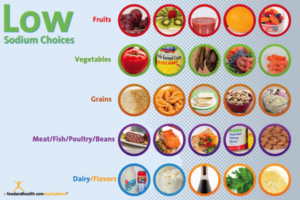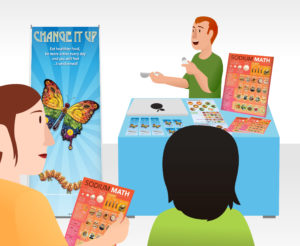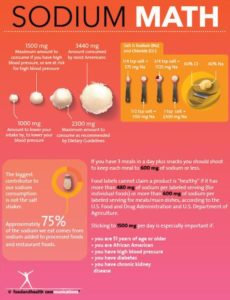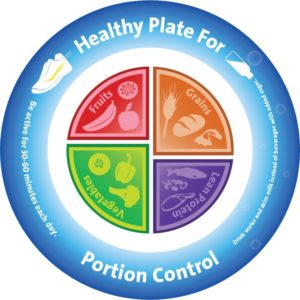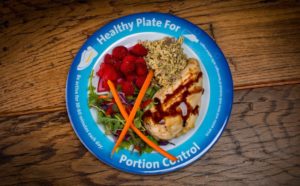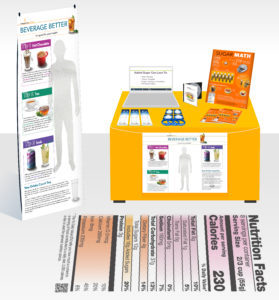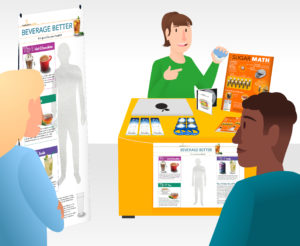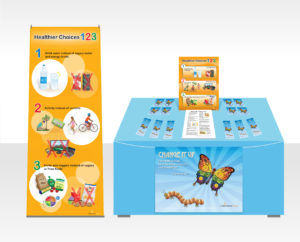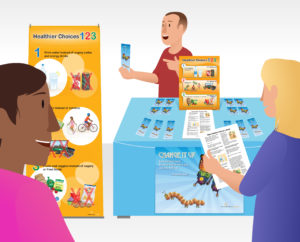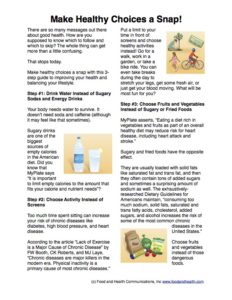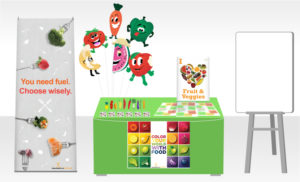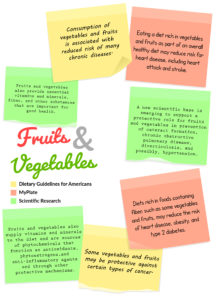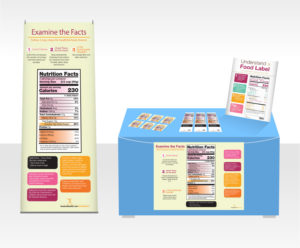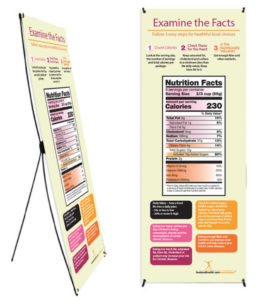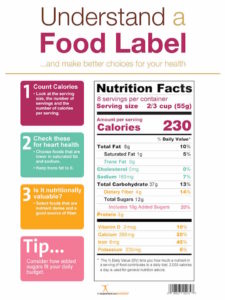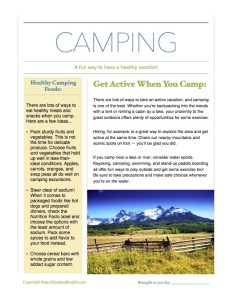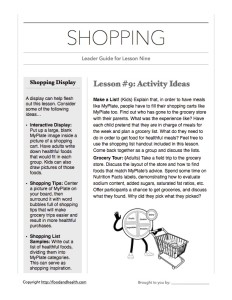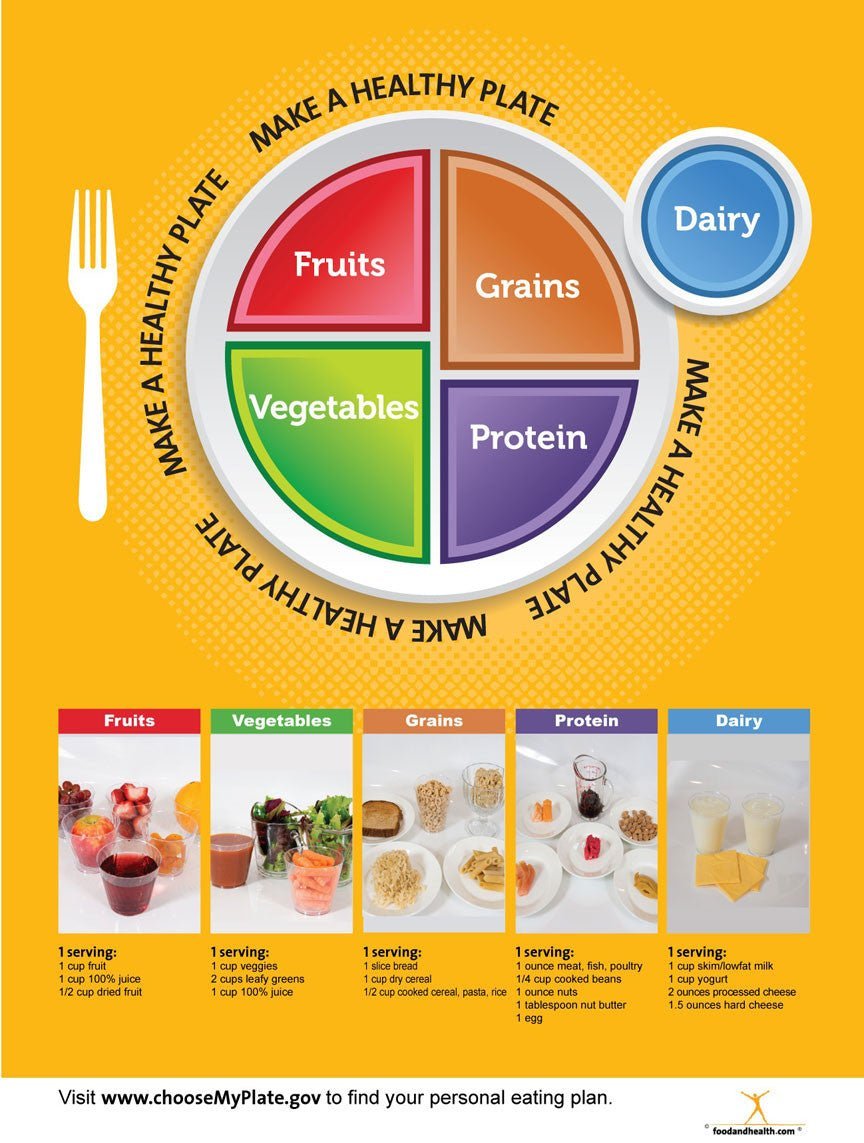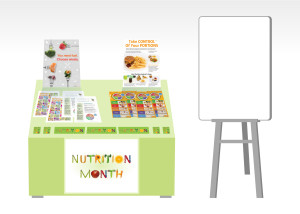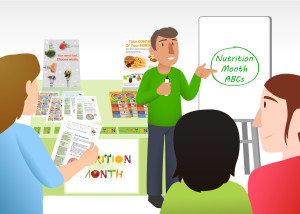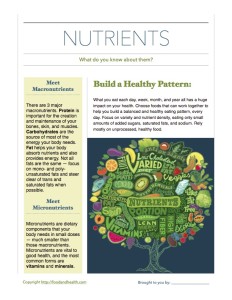Can you believe that it’s already time for a brand-new display of the month?
Before we get to the new stuff, let’s take a quick look back at the previous displays of the month. Are you caught up?
- Sugar Math
- Eating Pattern Shifts
- Fresh Fruit and Vegetable Month
- 10,000 Steps
- Nutrition Month
- Portion Control
- Sugar
- Beverage Better
All right, let’s dive into this month’s display…
Your Materials:
- A Display Kit: Salt Display Kit (2 How Much Salt is in That? Posters, 1 Low Sodium Choices Poster, Mini Salt Shakers)
- Extra Display Options: Sodium Math Poster on an Easel, Change It Up Banner, Food Label Floor Sticker
- The Handouts: Sodium Math Tearpad
- The Prizes: Change It Up Stickers, Change It Up Bookmarks
- Multimedia Elements: Salt DVD, Sodium Education PowerPoint Show
The Activities:
- Interactive Activities: Guess the Salt Content, Make a Low-Sodium Shopping List
- Presentations: Salt DVD or Sodium Education PowerPoint Show
The Details:
Mix and match your materials into a visually-appealing display.
For the Guess the Salt Content interactive activity, you’ll need to do a little research beforehand. Grab a couple of grocery store staples (including some sources of shockingly high sodium levels, like prepared meals or frozen foods) and write down how many milligrams of sodium are in each one. You can take pictures of them or bring their packages into your display area for a bonus visual.
When your participants arrive, hold up (or otherwise introduce) the first item and ask people to guess how much sodium is in a serving. How much sodium is in the package? Offer Change It Up Stickers and Change It Up Bookmarks as incentives for participation and/or correct answers and use the Mini Salt Shakers from the Salt Display Kit to illustrate how much sodium is in each food.
After discussing a couple items, ask how people feel about the salt content. Is it roughly what they thought? Surprisingly high? Finish the discussion, then demonstrate how to find sodium content on the Nutrition Facts label by using the Food Label Floor Sticker. How much sodium is in one serving of the sample food? How about in the whole container?
For the Make a Low-Sodium Shopping List activity, begin by brainstorming typical foods on a shopping list. Then discuss which of those foods are high in sodium. How can people remember to check the label for certain foods, comparing different versions and selecting the option with the lowest sodium? Review a few strategies with the group, exploring the pros and cons of each one.
For the Presentations, grab your laptop and projector and set up either the Salt DVD or the Sodium Education PowerPoint Show. For the latter, introduce the handouts that come with the show first and answer any initial questions people may have. After the presentation, discuss the key points. What was surprising? Why?
And here are a few materials that may come in handy for this month’s display!

Sodium Salt Math Poster
$22.75 $25.50
Add to Cart

Salt DVD - Salt Video - Salt and Sodium Education - Nutrition Education DVD
$99.00 $99.00
Add to Cart




